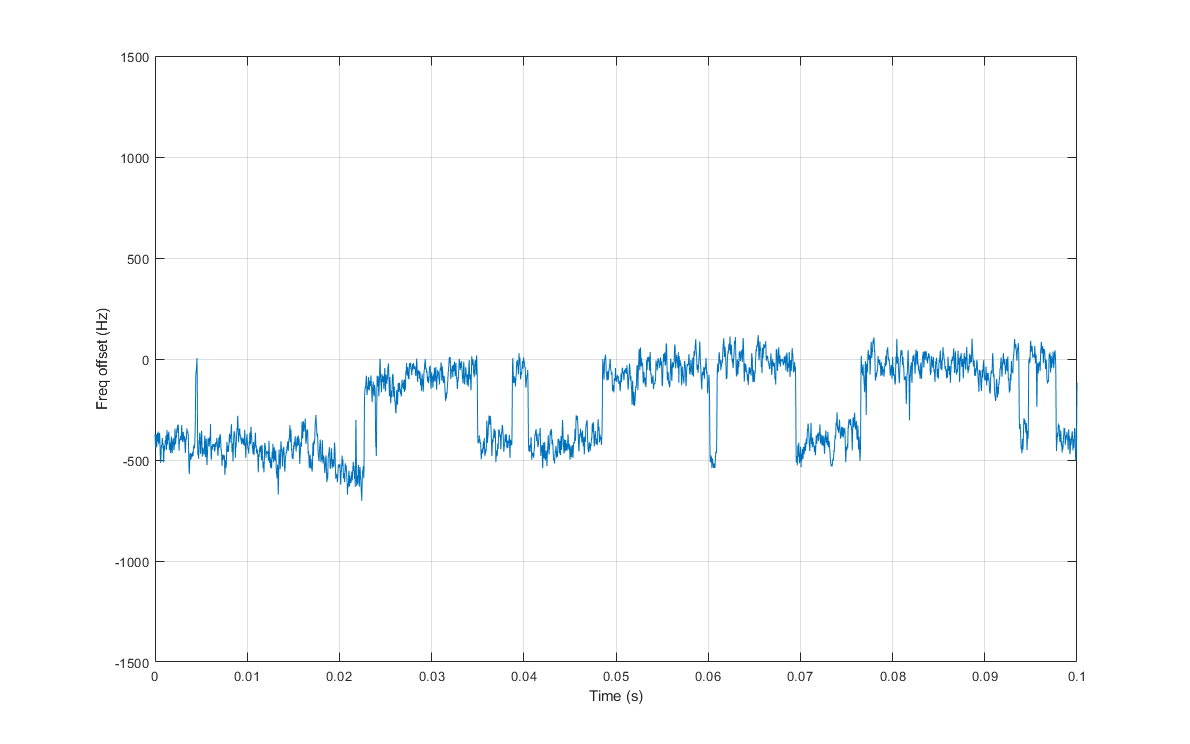Other Parts Discussed in Thread: MSP430FR5994
Hi All,
I have been having some unexplained issues with the DCO on the MSP430FR2433 part.
I am using the DCO without the FLL enabled, and I am seeing some odd behavior.
When the DCO tap is held constant, I see discrete jumps in the output frequency. On some parts, I have seen the discrete jump in frequency as high as 0.5%. The output appears to jump back and forth between two discrete frequencies. This appears to happen randomly on a millisecond scale. I would expect the DCO to drift over time, but I am puzzled by this behavior.
Note, the MOD is disabled, FTRIM, RSEL are both constant, and the CPU is in LMP0 sleep / not executing code. The jumping in frequency seems to be directly related to hardware. I have tested this at various constant values of DCO, FTRIM, and RSEL, across various devices. The magnitude of of the instability seems to vary part-to-part.
I would like to know if this is normal behavior, inherent to the DCO hardware used in this MCU, and if there is any way to quantify or predict how frequently and how far the DCO will jump between frequencies. (ie is there min/max/typical values associated with this behavior?).
In the attached graph below, the center frequency (0) is 180 kHz. Frequency is measured on the SMCLK output.
Any information appreciated.
Thanks,
Gary


